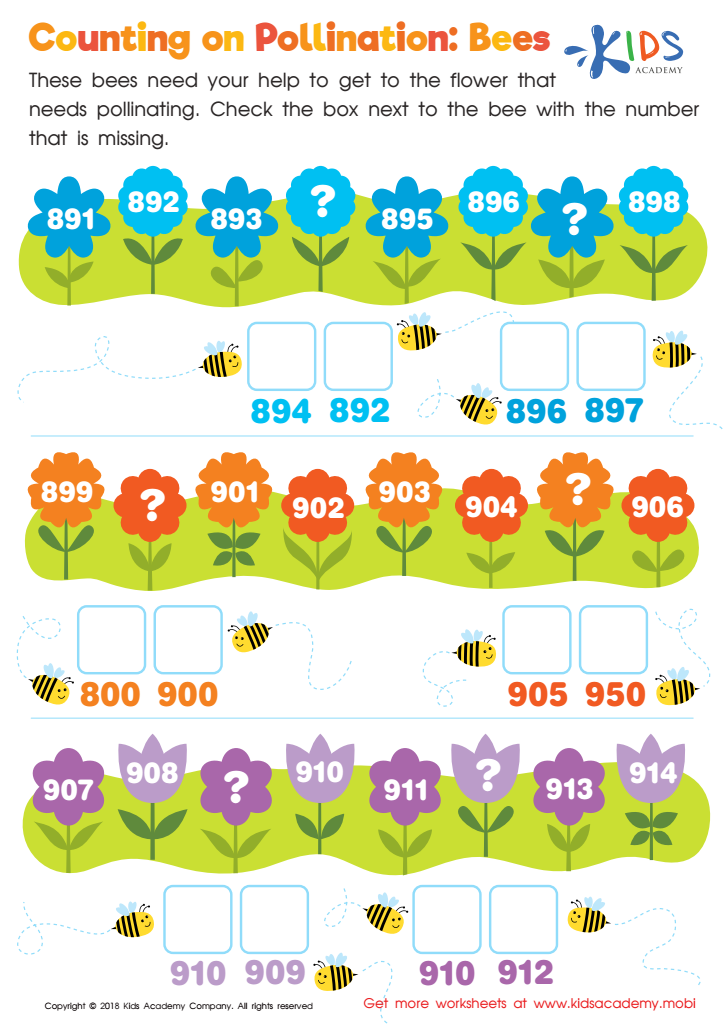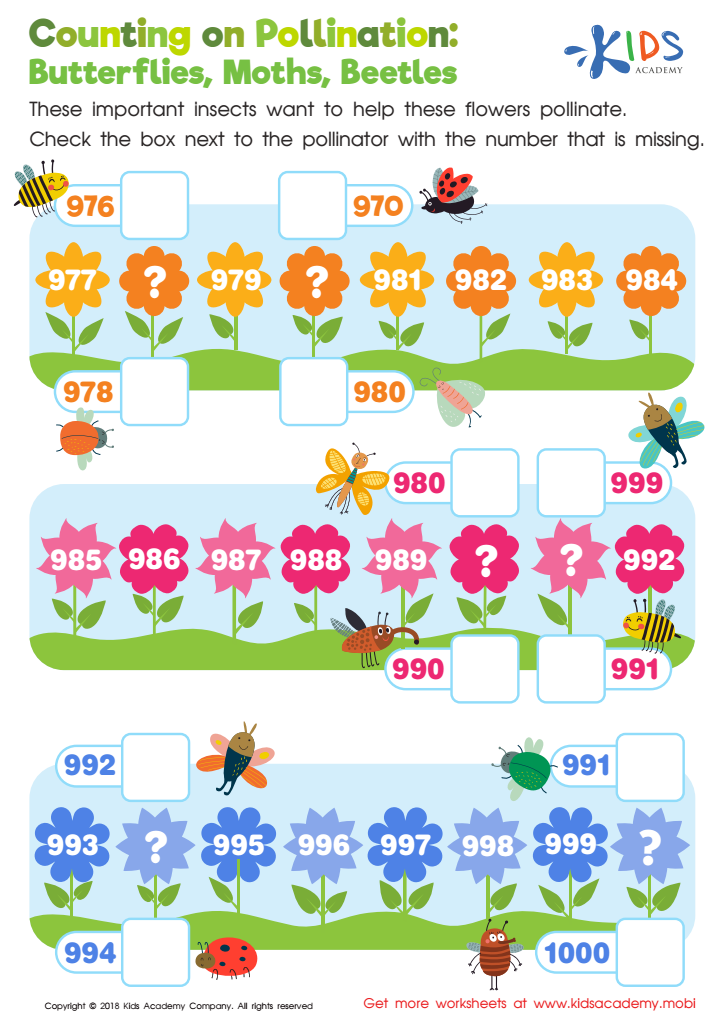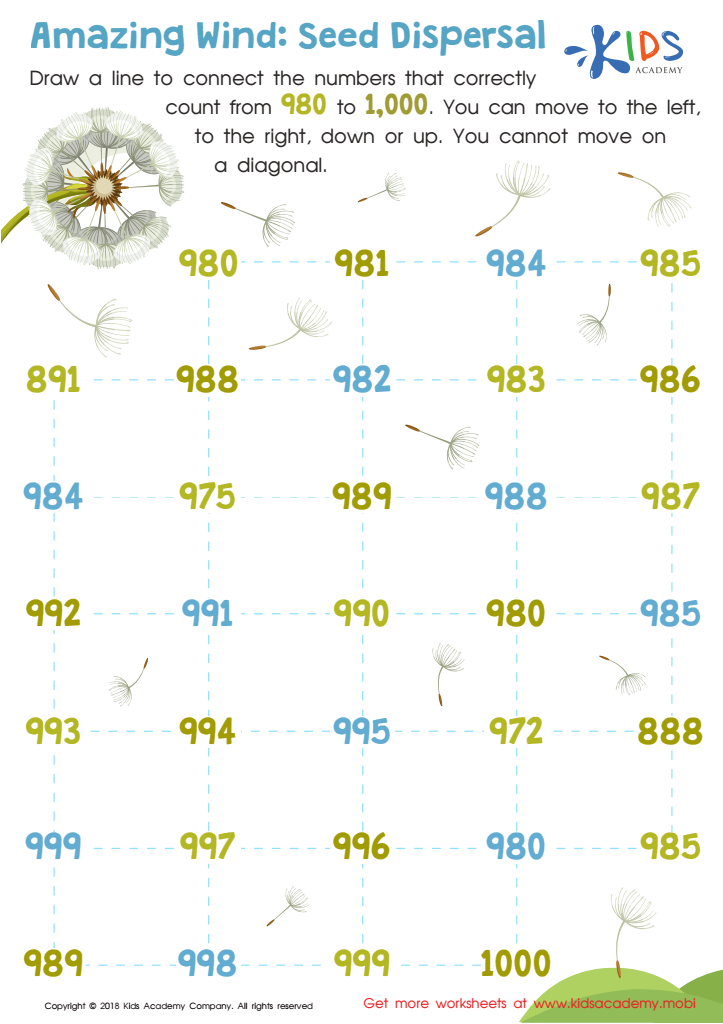Count up to 1,000 - Lesson for Grade 2, Chapter - Counting and Comparing
In the lesson "Count up to 1,000," second-grade students embark on an engaging journey through the fascinating world of pollination and seed dispersal, utilizing nature-themed activities to bolster their counting skills. Through meticulously designed worksheets titled "Counting on Pollination: Bees," "Counting on Pollination: Butterflies, Moths, Beetles," and "Amazing Wind: Seed Dispersal," learners will not only practice counting up to 1,000 but will also understand the critical role that numbers play in the natural world.
This lesson is an integral part of the "Foundations in Operations Within 1000" unit, under the broader chapter of "Counting and Comparing." By connecting the dots between mathematics and the environment, students gain a holistic view of how numbers influence ecological systems. This interdisciplinary approach makes learning more relevant and exciting, encouraging students to see the value of mathematics in everyday life.
Understanding how to count up to 1,000 is crucial for developing a solid foundation in mathematics. It prepares students for more complex mathematical concepts and operations they will encounter later in their academic journey. Moreover, this lesson instills a sense of numerical confidence and competence, which are important for their overall academic success and for navigating the world around them.
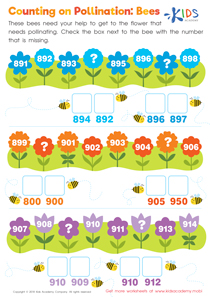
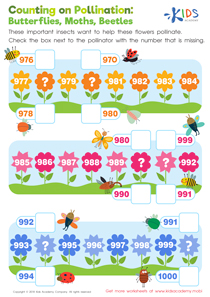
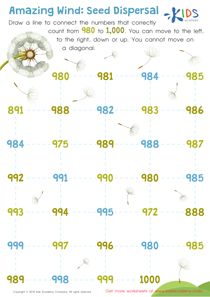
-
Activity 1 / Counting on Pollination: Bees Worksheet
The more we're able to identify number patterns and sequences, the easier we're able to do math computation quickly and efficiently. This brightly colored downloadable worksheet will have your children helping the bees get to the missing number boxes of flowers that need pollinating. They won't even know they're strengthening their number sense and using advanced number line skills!
-
Activity 2 / Counting on Pollination: Butterflies, Moths, Beetles Worksheet
Using a number line to help build computation accuracy and efficiency is a base-level math skill, but can be used with advanced numbers for higher-level adding and subtracting. When your child is able to identify missing numbers in sequences, they're building those skills. This charming and cheery worksheet invites them to help the butterflies, moths and beetles pollinate the beautiful flowers as they strengthen their number sense.
-
Activity 3 / Amazing Wind: Seed Dispersal Worksheet
Your child won't even know they're really doing math with this fun worksheet that has them use traceable lines to disperse the seeds of a dandelion to the places it wants to be. They'll be using number sense and sequencing skills as they strengthen their fine motor and hand-eye coordination because every child loves to blow the seeds of a spent dandelion, don't they? They'll practice discerning between similar numbers while they do so, and strengthening their number reasoning.

